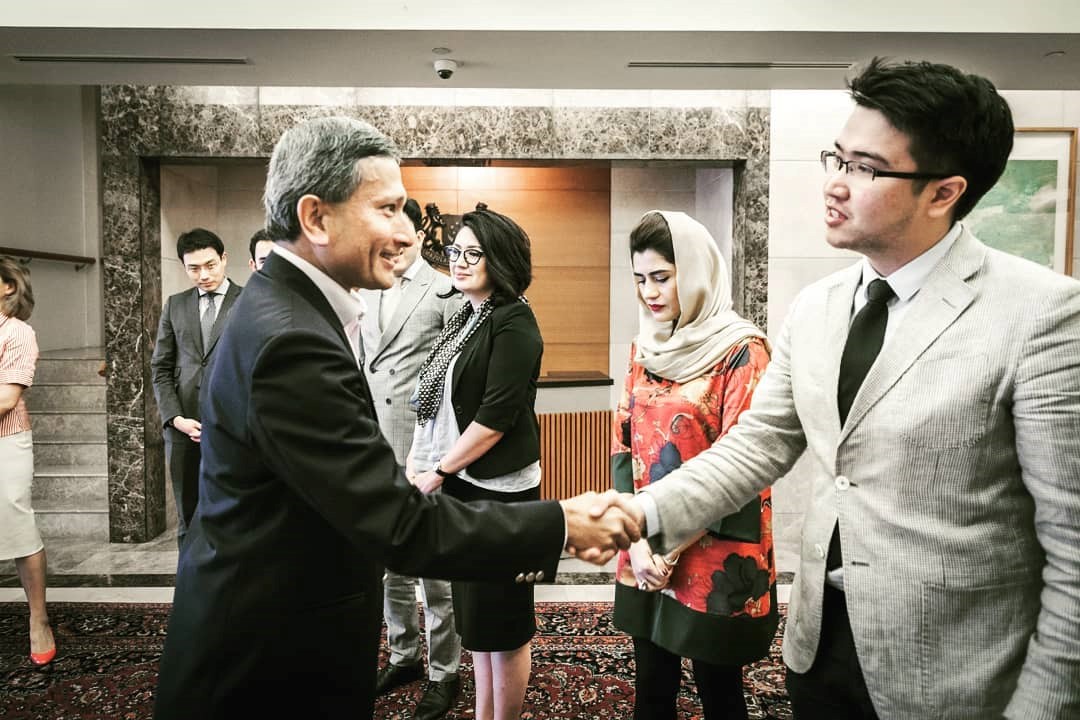In February 2019, twelve of our Central Asia-Caucasus Fellowship alumni had the opportunity to travel to Singapore to conduct a research visit to learn about the Association of Southeast Asian Nations (ASEAN). ASEAN is a regional intergovernmental organization representing 10 countries in Southeast Asia that works to facilitate regional cooperation, dialogue and partnership across governments, economies, security and to broaden societies across ASEAN member countries. (Read more about ASEAN here.)
The intention of the visit was for the Fellows to be able to explore the ASEAN model and learn lessons from it that may be relevant for regional cooperation across the “CAMCA” region. (CAMCA stands for Central Asia-Mongolia-Caucasus-Afghanistan.) The visit also served as a platform for dialogue between the organization of ASEAN and representatives of the Central Asian republics.
Over a week-long trip, the Fellows were hosted by leadership of the Government of Singapore, including Mr. Chan Chun Sing, Minister for Trade and Industry, and Mr. Ong Ye Kung, Minister of Education, as well as ASEAN representatives who briefed the Fellows on the evolution and mechanics of the ASEAN model.
Following the visit, we asked the participating Fellows some questions to reflect on their experience. In this blog post, we are delighted to highlight some of the key takeaways the Fellows shared from this unique opportunity.
1. As rising leaders from the CAMCA region, what was the message you wanted to share with the leaders you met in Singapore?
“It would benefit the ASEAN countries to pay closer attention to the rising economies of Central Asia, both as potential trading partners and as transport corridors, in order to enhance their economic cooperation with Europe.” (Gulya, Turkmenistan)
“The CAMCA region, with a population of over 100 million and a growing market, could become a key partner of the ASEAN countries on various issues such as trade, culture, tourism, security and so on.” (Sami, Afghanistan)
“First, despite the striking differences between the CAMCA nations and Singapore, we face many similarities with our geopolitical circumstances. This could translate into an instinctive understanding of each other's priorities and closer cooperation in the future. Second, more efforts need to be made to bridge Singapore's financial capacity with the CAMCA region's investment opportunities. Third, Singaporean foreign policy formulations should take into account the different aspirations, values and attitudes of the CAMCA region’s new generation that diverges from previous communist legacies.” (Tuvshin, Mongolia)
2. What goals did you have in attending?
“I wanted to learn more about the creation and history of ASEAN, the progress it has made and notable achievements in cooperation among its member states. I wanted to know how the leadership of member states have focused on the acceleration of economic growth, development and promoting regional integration. In particular, I was interested to hear about how ASEAN member states were able to focus on the implementation of regional integration efforts, while at the same time protecting their own national interests.” (Gulya, Turkmenistan)
“My goal in attending was to learn about the institutional design and modus operandi of ASEAN, its system of delegation and representation, how countries work together and the flawed aspects of the institutional design. For countries in Central Asia, it is important to understand these core lessons. The open conversations also helped us understand how ASEAN dynamics evolved throughout its history.” (Aziza, Uzbekistan)
“One of the prime objectives of my involvement was to compare and contrast processes in the Asia-Pacific, primarily, within ASEAN and Central Asia. Both regions face complex geopolitical realities surrounded by great powers and have undergone political transitions. ASEAN was able to form a working collective mechanism of cooperation, while Central Asia is just in the beginning of this journey.” (Iskander, Kazakhstan)
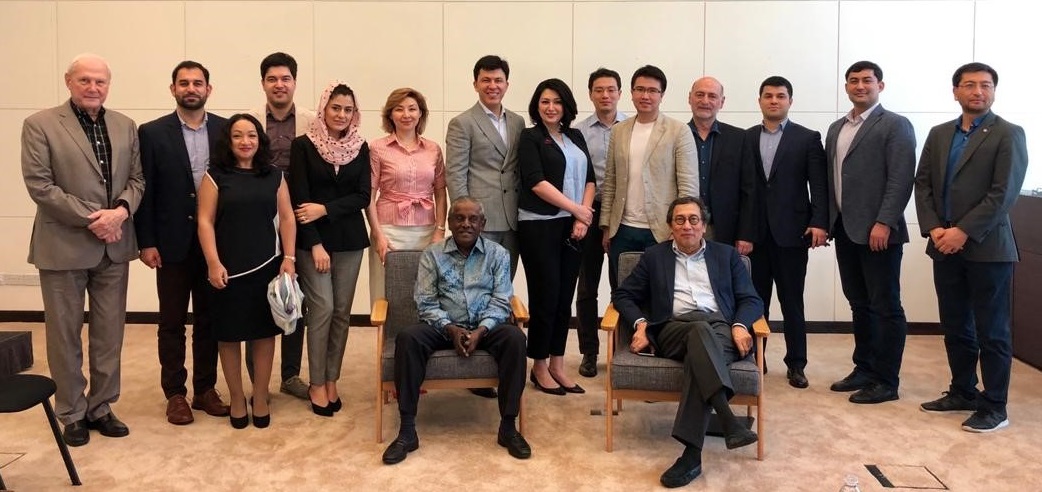
3. What exceeded your expectations about the trip?
“I was thrilled to find out that we were going to meet with very high level former and current officials. They were individuals who were at the core of ASEAN’s establishment and later expansion and were able to share insights of how they approached various challenges in order to promote cooperation efforts.” (Gulya, Turkmenistan)
“What really astonished me was the fact that very high government officials, such as the former Minister of Foreign Affairs of Indonesia, traveled to Singapore for a meeting with the CAMCA Network…the power of commitment, the power of the network.” (Iskander, Kazkhstan)
"A very humble attitude of Singaporeans towards themselves and their achievements and their zest to learn from other countries in any part of the world." (Farrukh, Uzbekistan)
“The exceptional hospitality of the National University of Singapore's Middle East Institute and the extraordinary generosity of our guest speakers, in terms of time and eagerness, to engage with us. They far exceeded my personal expectations and I cannot express enough of my gratitude.” (Tuvshin, Mongolia)
4. What was your biggest takeaway from the experience?
“By learning about the history of Singapore, I found it very interesting that one can build a prosperous society from scratch if a country’s leadership has a long-term vision to help shape policies focused on a sustainable future. Singapore’s example demonstrated that in a multinational society it is indeed possible to implement the governance needed while taking into account the stakeholders’ concerns and addressing those needs.” (Gulya, Turkmenistan)
“One of the realizations from this experience is that sometimes what we consider as a weakness, others consider as a strength. Here in Central Asia, we often say that being landlocked is one of the biggest obstacles for development. We want access to the sea. Among the Southeast Asian nations, 80% of the area is covered by water. There is such a shortage of land among member states of ASEAN, especially in Singapore. They believe that Central Asia, with all its landmass and natural and human resources, contains a great possibility to reach economic development.” (Talant, Kyrgyzstan)
“There is indeed a correlation between countries' geography and economic development around the world, but now I see how strong leadership and good governance can have a statistically significant impact on both social and economic development (in the case of the ASEAN economies).” (Ravshan, Tajikistan)
“Outside Southeast Asia, ASEAN is one of the most underrated and insufficiently understood regional cooperation models. The lessons for other regional cooperation initiatives are enormous. For CAMCA countries, whose interests and priorities are more and more aligned, ASEAN could function as an inspiration to integrate regardless of existing and inevitable differences.” (Tuvshin, Mongolia)
"I realized that for cooperation and integration there is no need for early institutionalization. Better connectivity can be achieved on bilateral and multilateral levels through various platforms that eventually lead to better cooperation among regional countries. In this regard, ASEAN's experience was fascinating and totally applicable to the CAMCA region." (Farrukh, Uzbekistan)
"That a small state, against all odds, can still build a diverse society with great economic achievements. Singapore has proved to the world that geography and natural resources do not define your future success. This adds to my belief that a strong political will to embrace meritocratic principles and a solid stance against corruption can lead to development miracles. As an Asian saying goes: 'Better to see something once than to hear about it a thousand times.' I am deeply grateful to the Rumsfeld Foundation and Ambassador Bilahari Kausikan for this study trip that proved to be an eye opener for me and for my colleagues." (Zuhursho, Tajikistan)
5. Is there anything you have implemented from the trip since you returned home?
“After my return home, I participated in a workshop organized by the European Bank for Reconstruction and Development for Turkmen manufacturing and production companies that are seeking new markets to export their goods. I suggested to them the option of ASEAN countries as a potential market opportunity. I also had separate meetings with a few of the exporters after the event and gave them ideas of how they could market their goods for the potential consumers within ASEAN which contains a market of over 600 million inhabitants.” (Gulya, Turkmenistan)
“I published an op-ed on BBC Persian’s website about Singapore and our group’s trip. This op-ed received a lot of attention on social media and it was re-published by other publications several times. I also gave a presentation at Pishgham University about 'What We Could Learn from ASEAN's Experience.' Lastly, another Fellow from Afghanistan who also participated in the ASEAN study tour and I did a joint presentation at the Ministry of Foreign Affairs. The event included about 80 people, including Foreign Service diplomats and some students of diplomacy at the Ministry of Foreign Affairs. We presented on ASEAN and its different institutions. Then we compared and contrasted ASEAN, the South Asian Association for Regional Cooperation (SAARC) and Economic Cooperation Organization (ECO) by highlighting the reasons behind ASEAN's success as a regional cooperation organization and the factors preventing SAARC and ECO from becoming more effective institutions.” (Sami, Afghanistan)
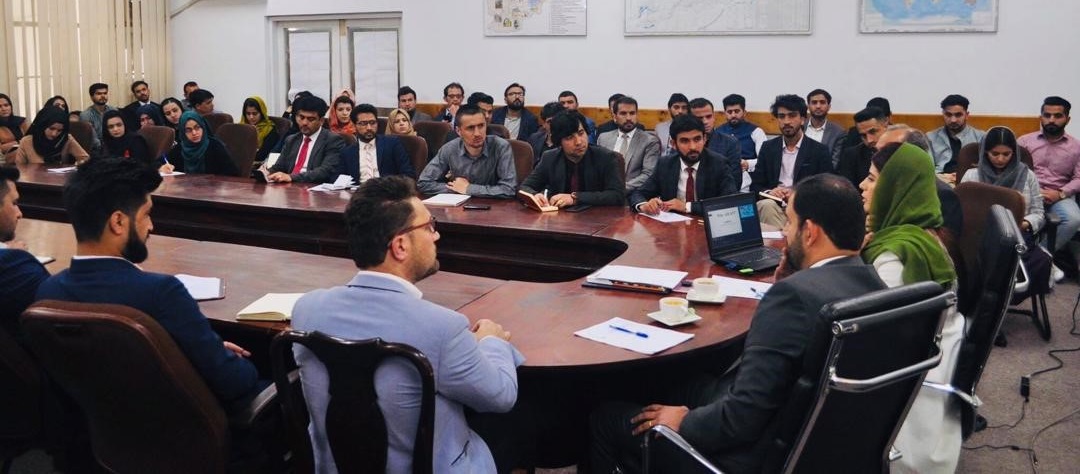
“I have consulted government officials, diplomats and experts on ASEAN as a possible guideline for Central Asian cooperation. I also shared some of my experience from the Singapore trip and viewpoint on ASEAN during a lecture I gave at the Carnegie Endowment in D.C. Plus, I am preparing an article on Central Asian cooperation and the ASEAN model for 'The Diplomat Magazine.'” (Iskander, Kazakhstan)
“We are planning to organize a number of events through this partnership with several local think tanks. We plan to invite politicians, members of Parliament, diplomats, economists, NGOs, business leaders and media representatives to hear our insights and thoughts about the ASEAN model. Then, we want to follow our event with a special publication in the magazine of the Regional Institute of Central Asia.” (Nazira, Kyrgyzstan)
6. How do you see the CAMCA Network working together on initiatives and experiences like this in the future?
“If you compare the ASEAN region and the CAMCA region, the pre-conditions in ASEAN were much more complicated than those in CAMCA. Some ASEAN countries had to fight for independence, some were in armed conflicts with each other, the economic conditions were extremely bad and there was lack of natural and human resources. Yet, despite the political, religious and cultural differences, the countries of ASEAN agreed on one thing, if they were to survive, they had to 'hang together rather than hang separately' and that 'together we stand, separate we fall.' By sticking together and avoiding taking sides between major powers, the ASEAN countries managed to accomplish political survival, reached economic development, and actually gained respect from the great powers competing for influence in the region.” (Talant, Kyrgyzstan)
“Our trip to Singapore is the beginning of what I would call the ‘CAMCA Network going global.’” (Nazira, Kyrgyzstan)
7. What did you think was a top benefit of a cross-cultural exchange like this?
“It helped us to think beyond the boundaries of our nation-states and gave us more reason to look at the potential of the region as a whole for growth and stability.” (Sami, Afghanistan)
“Singapore is a cosmopolitan society where we saw various races and religions living in peace and harmony. We celebrated the Chinese New Year while there and learned that Singaporeans celebrate other religious events, such as Buddhist Vesak Day, Hari Raya Puasa or Muslim's Eid-Al-Fitr, Christmas, Hindu Diwali and more.” (Ravshan, Tajikistan)
“I believe the first-hand experience interacting with practitioners, diplomats and government officials who were personally engaged in shaping the ASEAN model was a once-in-a-lifetime opportunity. I can better understand the pros and cons of the regional entity and the process of creating ASEAN.” (Iskander, Kazakhstan)
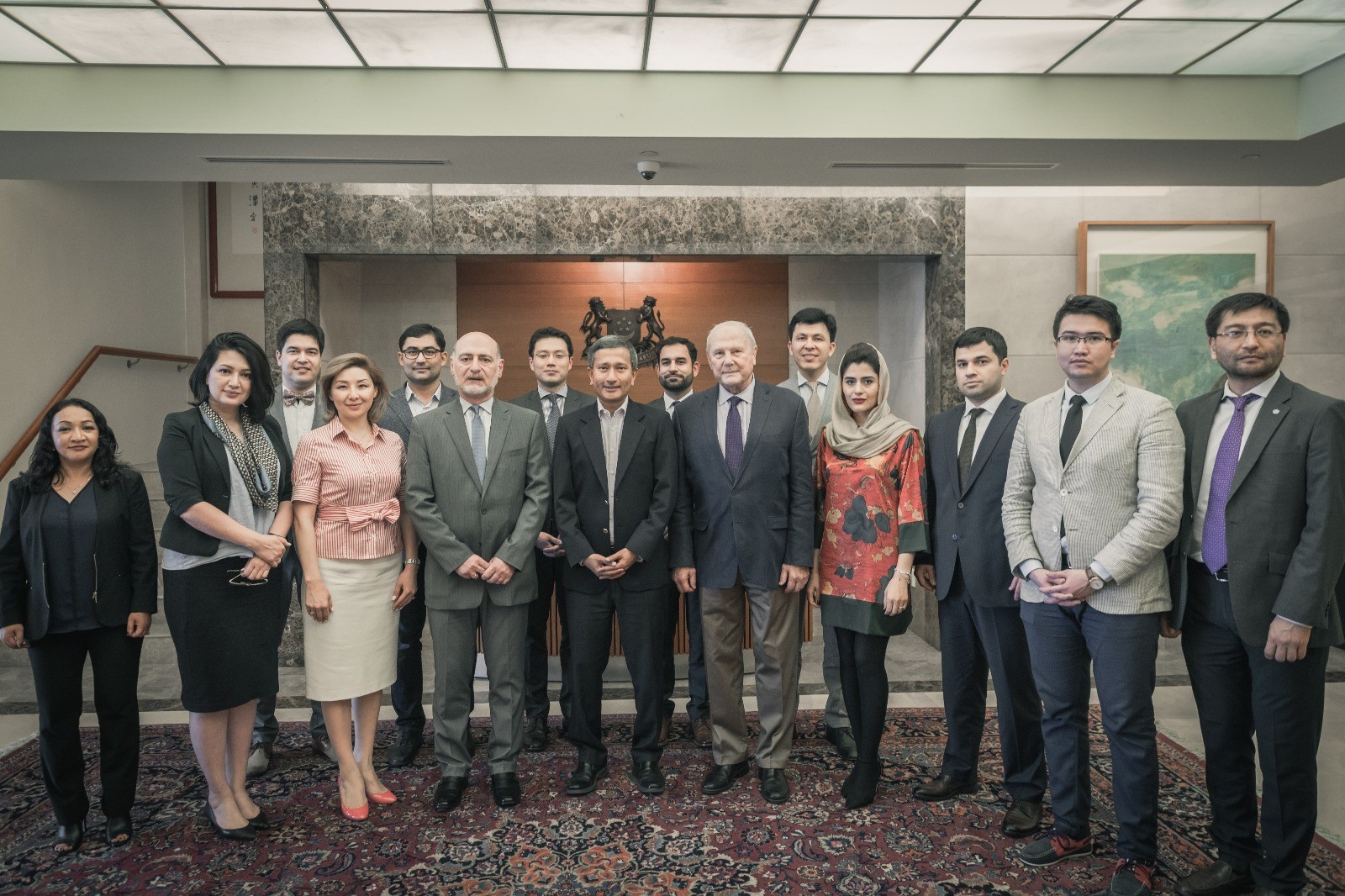
8. What do you want people more broadly to know about the CAMCA Network's rising generation of leaders?
“That it is a network of bright minds, global vision, thinkers and doers.” (Iskander, Kazakhstan)
“Although certainly the continuation of its previous generations, CAMCA's new generation has so much uniqueness to it that it requires people outside the region to completely reorient and refocus their perspectives. The old perception is not applicable anymore and we believe it is for the better.” (Tuvshin, Mongolia)
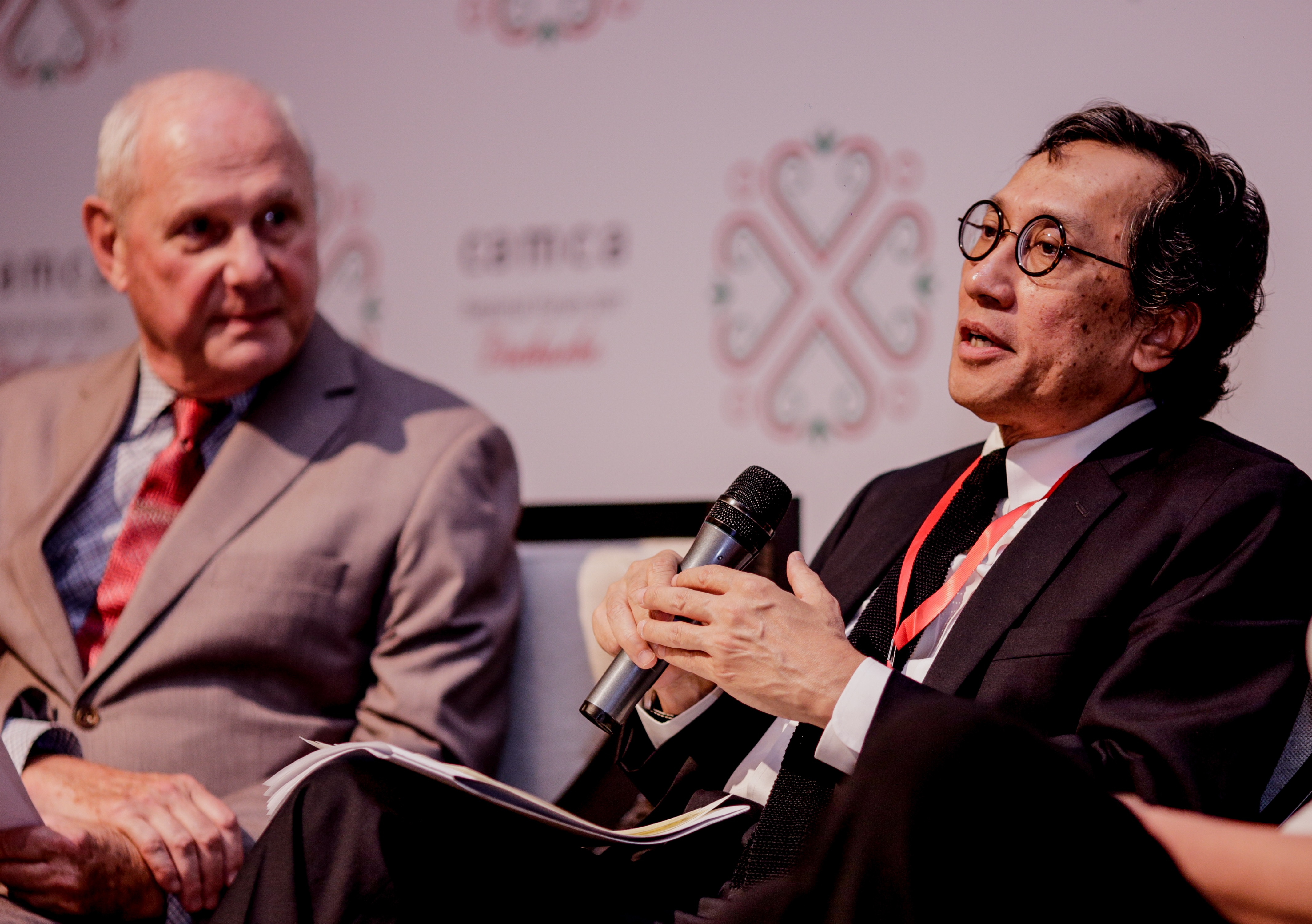 Our gratitude to Amb. Bilahari Kausikan, current Chairman of the Middle East Institute, an autonomous institute of the National University of Singapore, and former Ambassador-at-Large of Singapore, for his efforts and vision in making this exchange possible. We have been honored to host Ambassador Kausikan as a keynote speaker at previous CAMCA Regional Forums and are appreciative of his continued support of and interest in the CAMCA region. Follow Amb. Kausikan on Facebook and read a joint article he wrote with Dr. S. Frederick Starr, Chairman of the Central Asia-Caucasus Institute, here: https://www.the-american-interest.com/2017/06/16/central-asia-all-together-now/.
Our gratitude to Amb. Bilahari Kausikan, current Chairman of the Middle East Institute, an autonomous institute of the National University of Singapore, and former Ambassador-at-Large of Singapore, for his efforts and vision in making this exchange possible. We have been honored to host Ambassador Kausikan as a keynote speaker at previous CAMCA Regional Forums and are appreciative of his continued support of and interest in the CAMCA region. Follow Amb. Kausikan on Facebook and read a joint article he wrote with Dr. S. Frederick Starr, Chairman of the Central Asia-Caucasus Institute, here: https://www.the-american-interest.com/2017/06/16/central-asia-all-together-now/.
The CAMCA Network is a group of professionals commited to sharing ideas, knowledge, expertise, experience and inspiration across Central Asia, Mongolia, the Caucasus and Afghanistan. The leaders in the CAMCA Network are driven to contribute to development, prosperity and cooperation in the CAMCA region. Read more at the CAMCA Network website.


